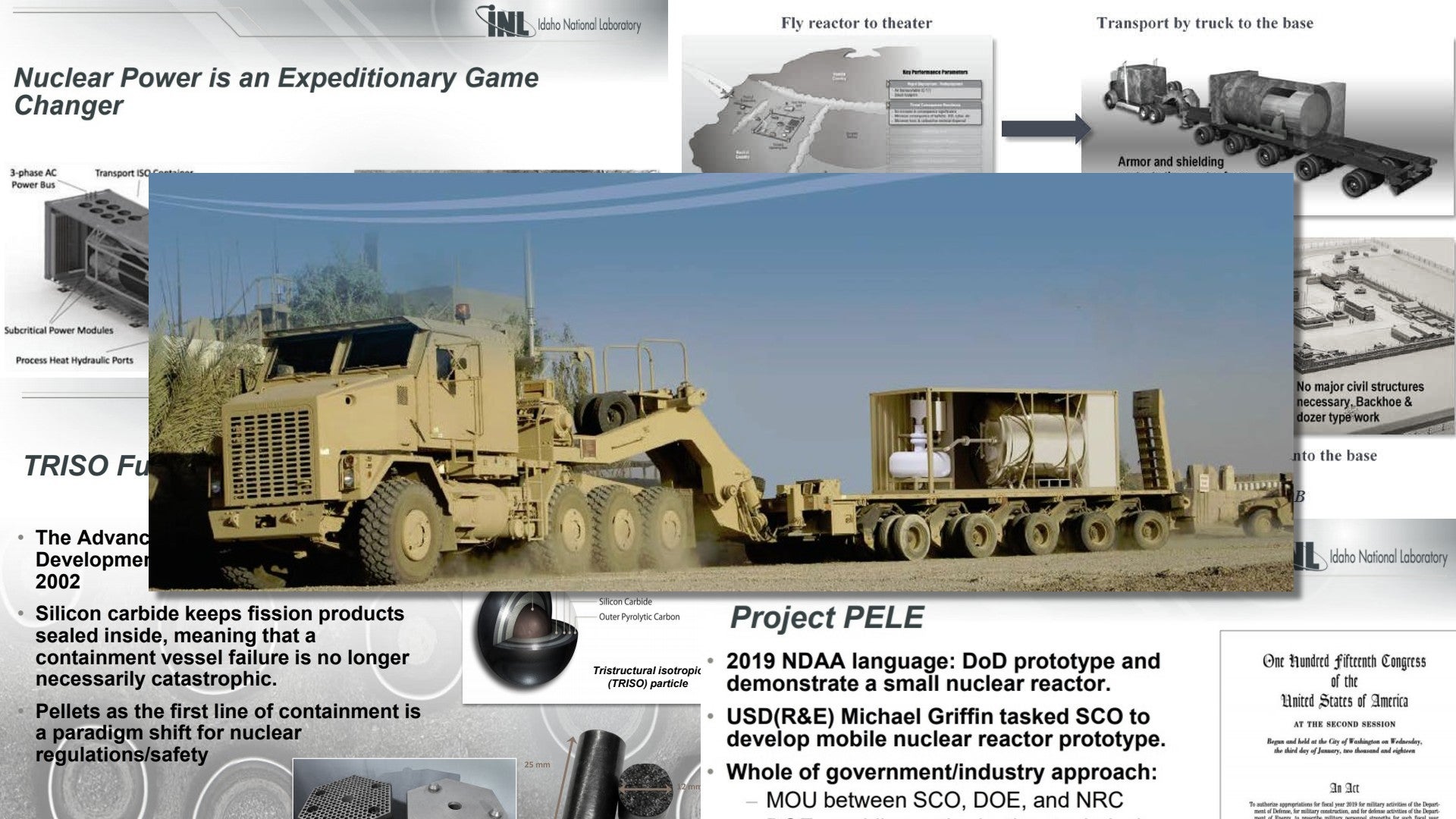The Office of The Secretary of Defense (OSD) has requested $60 million dollars for Project Pele, which is aimed at developing a new, transportable nuclear microreactor to provide high-output, resilient power for a wide variety of Department of Defense (DOD) missions. The DOD hopes to begin working on a prototype reactor design, which will hopefully be able to eventually produce one to five megawatts of electricity and operate at peak power for at least three years, in the next fiscal year.
The request for funding for Project Pele is found in the Pentagon’s proposed budget for the 2022 Fiscal Year, which was released on May 28, 2021. This is the first year that the Office of the Secretary of Defense has asked for money for this program through the larger Advanced Innovative Technologies line item. Previous funding for Pele, also known as the Micro Nuclear Reactor Program, had come through a separate Operational Energy Capability Improvement account in OSD’s budget.
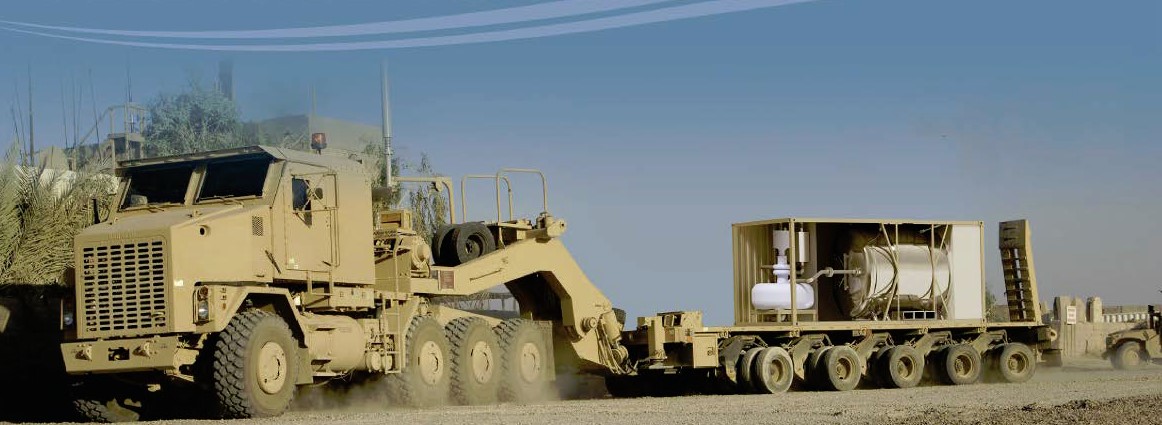
The budget documents say that the goals for Project Pele in the 2022 Fiscal Year are to “complete the design phase and prepare for construction of a 1-5 Megawatt electric transportable nuclear microreactor.” In addition, it notes that “due to the nature of this project, specific applications and detailed plans are available at a higher classification level.”
“The Pele project continues activities initiated under Congressional direction in FY 2020 and FY 2021,” according to the documents. “Congressional Adds [totaling $16 million in the 2021 Fiscal Year] directed for nuclear fuel core development to support the Pele reactor maturation and also funding to support power and thermal management maturation for directed energy weapons.”
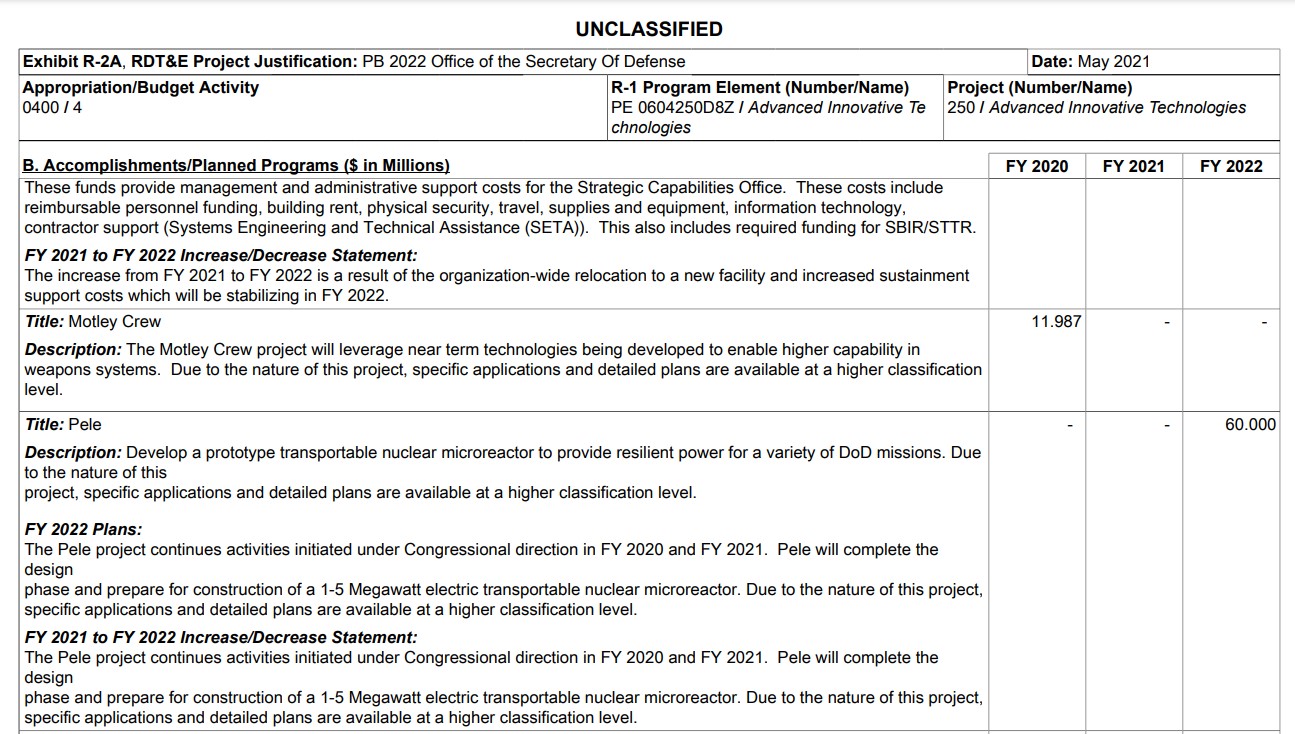
A large part of the Project Pele is the development of Tri-structural Isotropic (TRISO) fuel, what the DOE calls “the most robust Nuclear Fuel on earth.” TRISO consists of tiny poppy-seed sized kernels of uranium, carbon and oxygen encapsulated by layers of carbon- and ceramic-based materials designed to block the emission of radioactive fission products. X-Energy, one of the companies awarded a contract to create a reactor design for Pele, develops its own proprietary form of TRISO known as TRISO-X. X-Energy claims their fuel is among the safest available, since it is encapsulated within its own containment vessel and thus greatly reduces the risks associated with nuclear fuels.
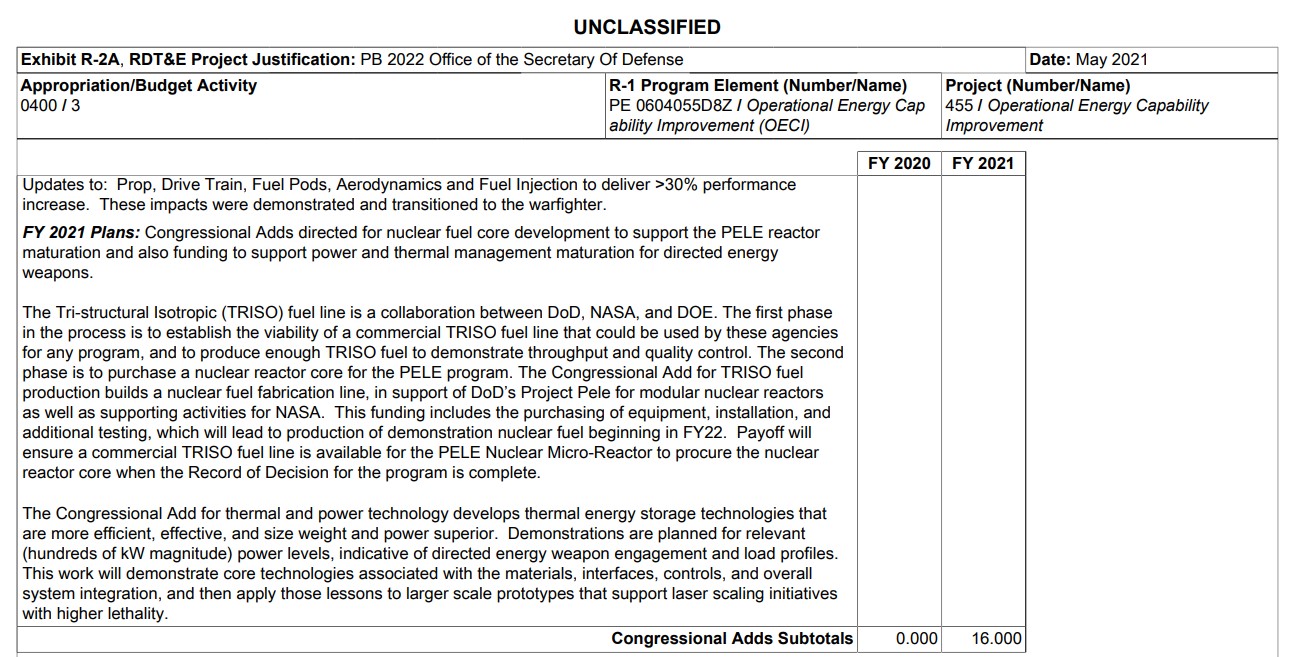
Project Pele began in 2019 with a request from the DOD’s Strategic Capabilities Office (SCO) that sought prototype designs from three industry partners: Westinghouse Government Services, X-energy, LLC, and BWX Technologies, Inc. “The Pele Program’s uniqueness lies in the reactor’s mobility and safety,” said Project Pele program manager Dr. Jeff Waksman in an official statement in 2020. “We will leverage our industry partners to develop a system that can be safely and rapidly moved by road, rail, sea or air and for quick set up and shut down, with a design which is inherently safe.”
In March of this year, X-Energy and BWX were awarded contracts to begin final design work on Pele prototypes. A two-year design-maturation period will now ensue, after which one of the two may be selected to build and actually demonstrate their design. Along with those industry partners, Project Pele is being developed with insights from the Department of Energy (DOE), the Nuclear Regulatory Commission, the National Nuclear Security Administration, the U.S. Army Corps of Engineers.
According to the Office of the Undersecretary of Defense for Research and Engineering, the goal of Project Pele is to develop a mobile reactor that minimizes risks, such as nuclear proliferation, environmental contamination, or human harm to operators or civilian populations. As already noted, the Fiscal Year 2022 budget requests says the desired design is as a 1-5 megawatt (MW) nuclear microreactor.
For comparison, the output of the smallest nuclear power plant in the United States, New York’s R.E. Ginna Nuclear Power Plant, is 581 MW. The desired power output is even smaller than most research reactors. By contrast, the largest nuclear power plant, Palo Verde in Arizona, puts out close to 4,000 MW. The S9G reactor on a Virgina class nuclear submarine can produce 40 MW.
According to DOD requirements, the prototype should be able to be up and running within three days of delivery and be able to be safely powered down and removed in only a week.
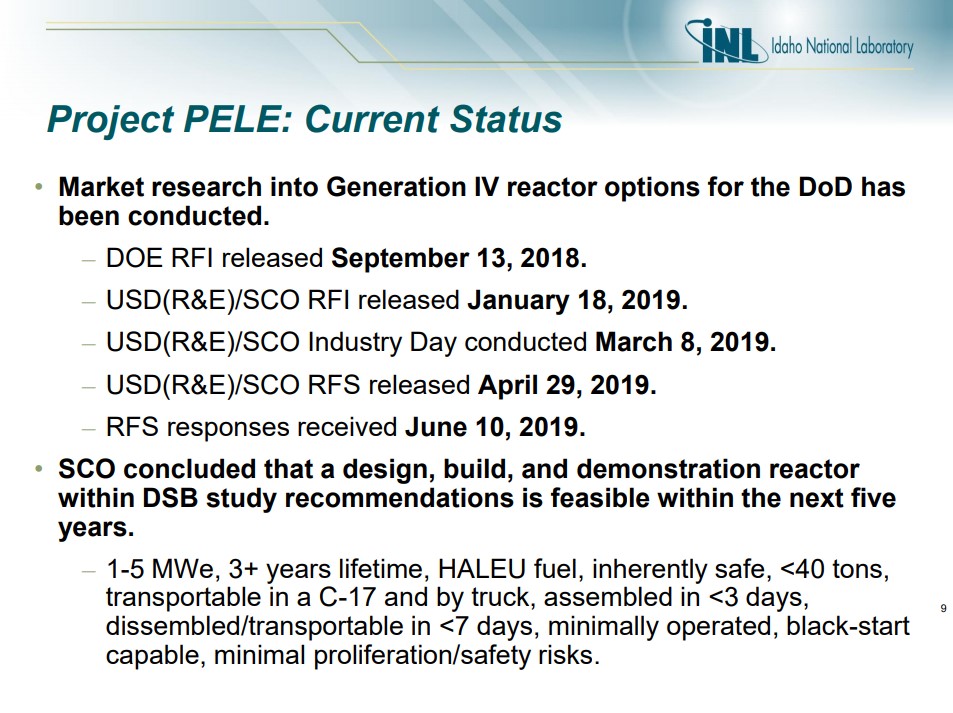
The funding for Pele also builds on several other developments, which show that the DOD, DOE, and the National Aeronautics and Space Administration (NASA) are investing heavily in new nuclear technologies to power a new American space age. “Production of a full-scale fourth-generation nuclear reactor will have significant geopolitical implications for the United States,” said Jay Dryer, director of the Strategic Capabilities Office. “The DOD has led American innovation many times in the past, and with Project Pele, has the opportunity to help us advance on both energy resiliency and carbon emission reductions.”
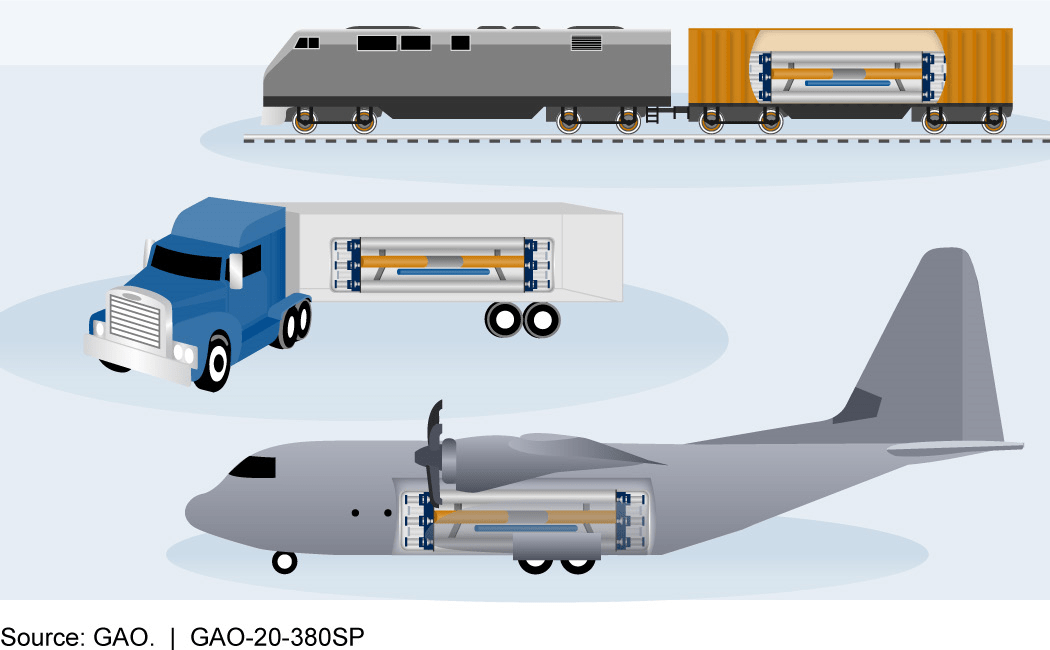
In 2020, the White House’s National Space Council published the document “A New Era for Deep Space Exploration and Development” which sought to outline a strategy by which the United States could further establish “a sustainable human and robotic presence across the solar system” through creating “an expanding sphere of commercial, non-governmental activities in which increasing numbers of Americans live and work in space.”
Starting with the premise that “the American way of life is reliant on space activities,” the document includes plans such as commercializing low-Earth orbit, expanding both robotic and human exploration, bolstering space-based national security capabilities, and improving “international cooperation for science, safety, security, and economic growth.” Pele is cited in the document as part of the White House’s goals of returning to the Moon, putting humans on Mars, and developing technologies to enable “lower cost commercial activities in space.”
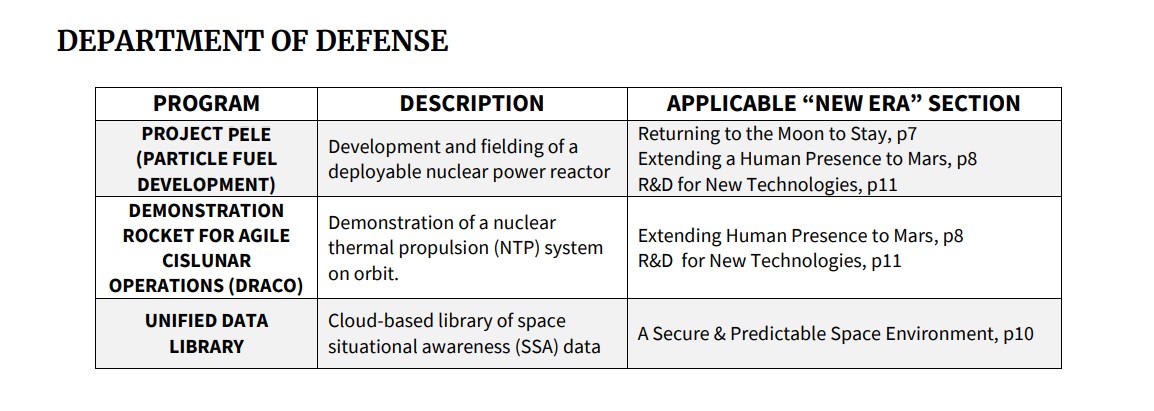
Building on that document’s goals, a January 2021 Executive Order expanded on the National Space Council document by ordering NASA to deliver a report that defines requirements and foreseeable issues for developing a nuclear energy system to enable human and robotic space missions for the next two decades. The order also included plans for a “Common Technology Roadmap” made among NASA and the Departments of Energy, Defense, Commerce, and State for developing and deploying these new reactor technologies.
Energy security and dominance have become cornerstones of DOD strategy, given the unbelievable amounts of fuel and energy consumed by the power-hungry systems the modern military depends on. U.S. Army leadership has previously stated that it wants its brigades to be self-sufficient for a week without the need for resupply, and there have been previous calls for microreactors that could fit inside existing platforms such as the C-17 Globemaster. Meanwhile, Lockheed Martin and other laboratories continue work on the lofty goal of developing miniaturized fusion reactors.
The United States isn’t the only nation pursuing new forms of nuclear technologies. For example, Russia has built the first of what could be a number of floating nuclear plants to be deployed across its Far North regions, and is even exploring mounting reactors on the Arctic seafloor, while China has similar plans for floating reactors intended for use in the geopolitically tense South China Sea.
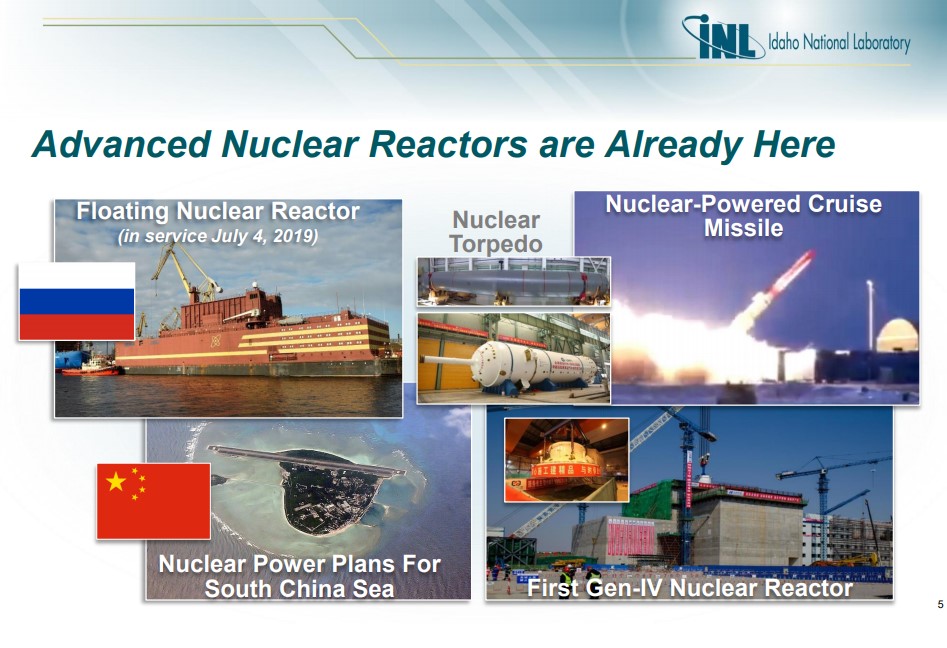
There are concerns, of course, associated with deploying mobile nuclear reactors to bases or the battlefield. Meltdowns, waste products, and other malfunctions are always a concern with nuclear energy technologies, and if a reactor in a contested area is destroyed by adversary forces, for example, the risk of environmental contamination is high. That, in turn, could create a political disaster for the DOD and United States. Deploying any nuclear systems abroad also incurs the risk of proliferation if those technologies should fall into the wrong hands due to a forward-operating base or convoy being overrun by hostile forces.
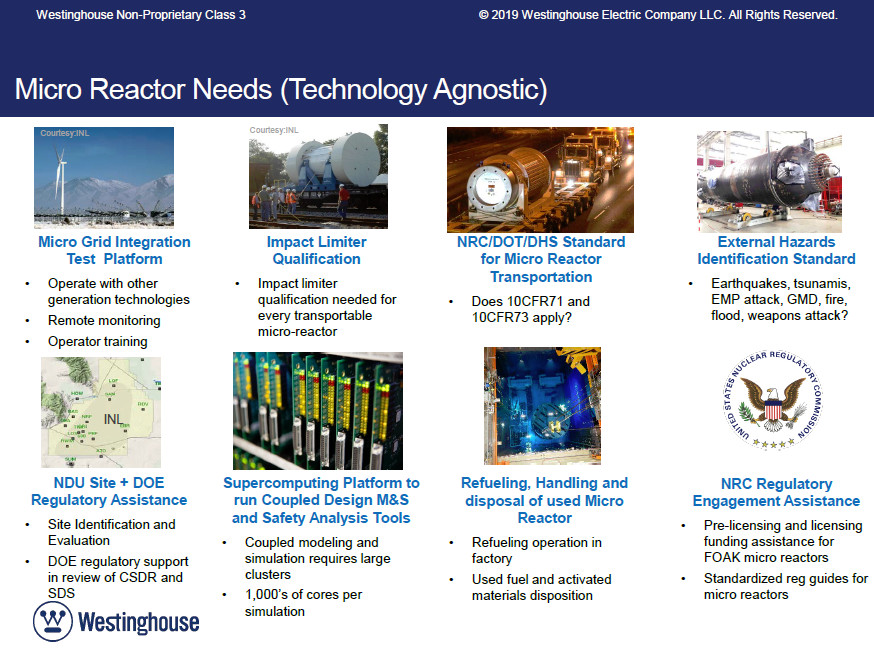
Those concerns will no doubt be a major policy consideration when, or if, these mobile reactors ever reach a state of technological readiness to where they can be deployed. New nuclear technologies aren’t the only new energy production and storage systems the DOD is eyeing, however. Revolutionary concepts such as space-based solar power beaming, new forms of hydrogen fuel cells, or even more advanced applications of existing technologies like modular solar generators are all being developed which could revolutionize how the DOD powers its expeditionary forces without the risks associated with nuclear power.
New nuclear technologies have been a key focus of DOD efforts lately, and the Pele project, if successful, could open the door to both a new space age and a new energy paradigm for DOD operations worldwide. The Pele project has the potential to create new possibilities for the self-sufficiency of forward-deployed units and reduce the DOD’s unimaginably large fossil fuel usage. In addition to freeing up logistical concerns and operational budgets, the development of a safe, efficient nuclear microreactor could help when it comes to freeing the US, and possibly the world, from its dependence on non-sustainable fuel sources both on and off the battlefield.
Still, Project Pele has a lot to prove, and many concerns to overcome, until any of that becomes a reality.
Contact the author: Brett@TheDrive.com
